Our Bordeaux Adventure – Part Trois
Posted on November 23,2024 By John Compisi
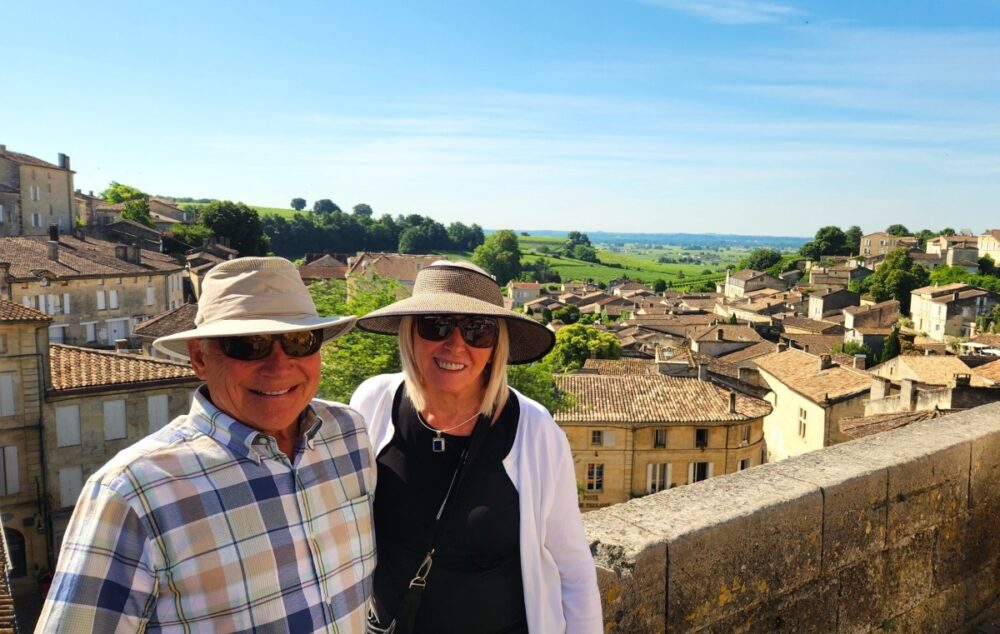
You will recall from Part Un, that we arrived in Bordeaux, from Paris, on a Sunday evening, near the end of June. We settled into our hotel, the Hôtel Majestic, and met up with the other 18 of our fellow travelers, our winemaking hosts, Adam Lee and Morét Brealynn and our awesome guide, Kelly McAuliffe!
We had a wonderful welcome dinner and a great first day visiting three Châteaux in both St. Emilion, on the Right Bank and Graves, on the Left Bank.
In Part Deux we described our day in Pessac-Léognan, Saint-Julien and Pauillac being dazzled by Château Haut Bailly, Château Haut Brion, Château Mission Haut-Brion, Chateau Léoville Poyferré and Château Lynch Bages.
Two amazing days and even more amazing Châteaux!
This is Part Three of our Bordeaux Adventure.
Another early start and after a great breakfast at Hôtel Majestic, we were ready to begin our third full day in Bordeaux. What delicious delights would we experience today under the guiding hands and tutelage of our two American winemakers and our American French wine expert?
Day 3 – Saint-Laurent-des-Combes, Fronsac, St. Emilion and Saint-Étienne-de-Lisse
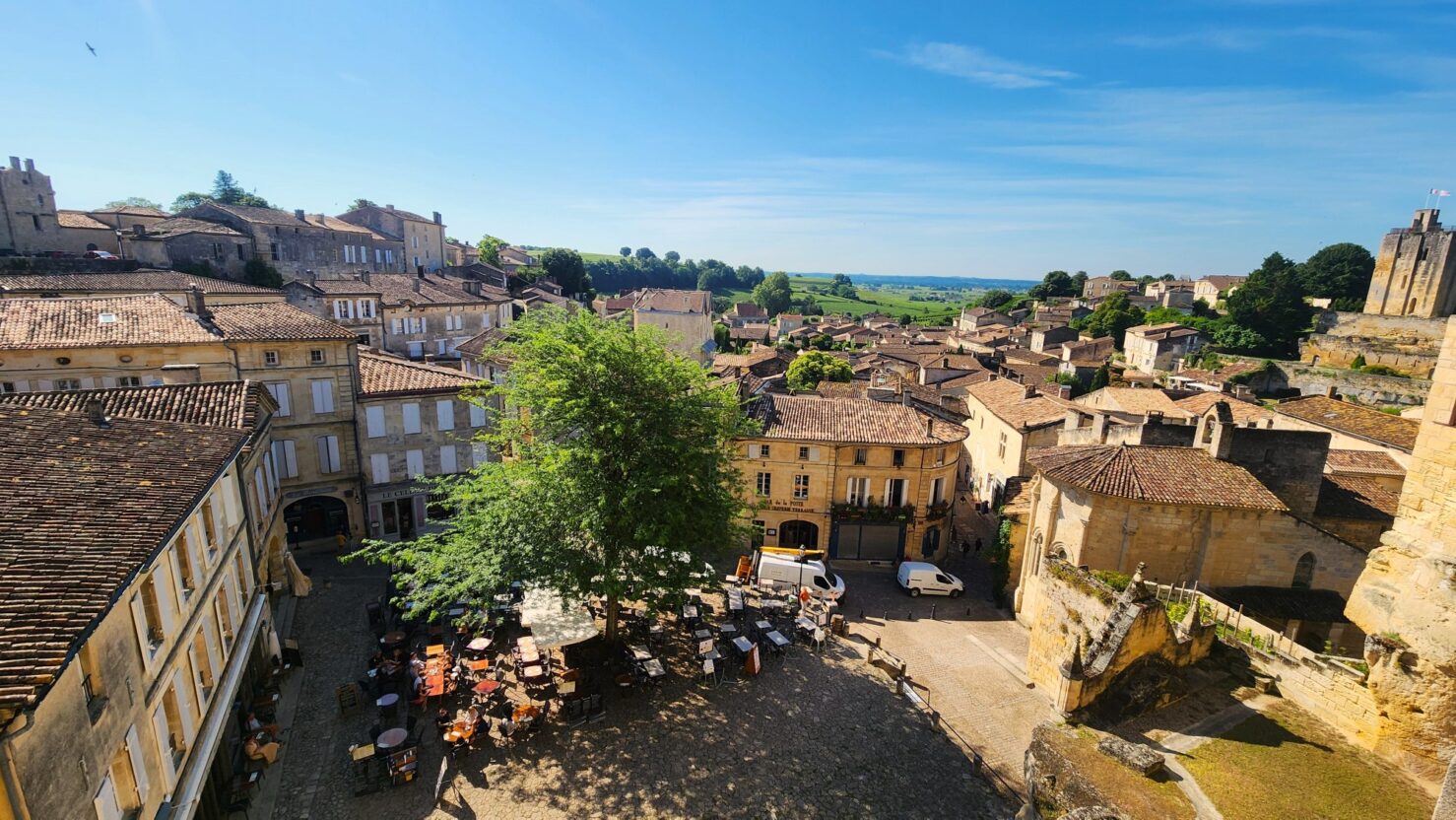
We arrived for the tasting at Château Tertre Roteboeuf (belching cow) at mid-morning. The weather was glorious with blue skies and moderate temperatures. Winemaker Louis Mitjavile, the son of François Mitjavile, the legendary owner of the Château, greeted us and gave us an introduction to the estate while overlooking their magnificent vineyards.
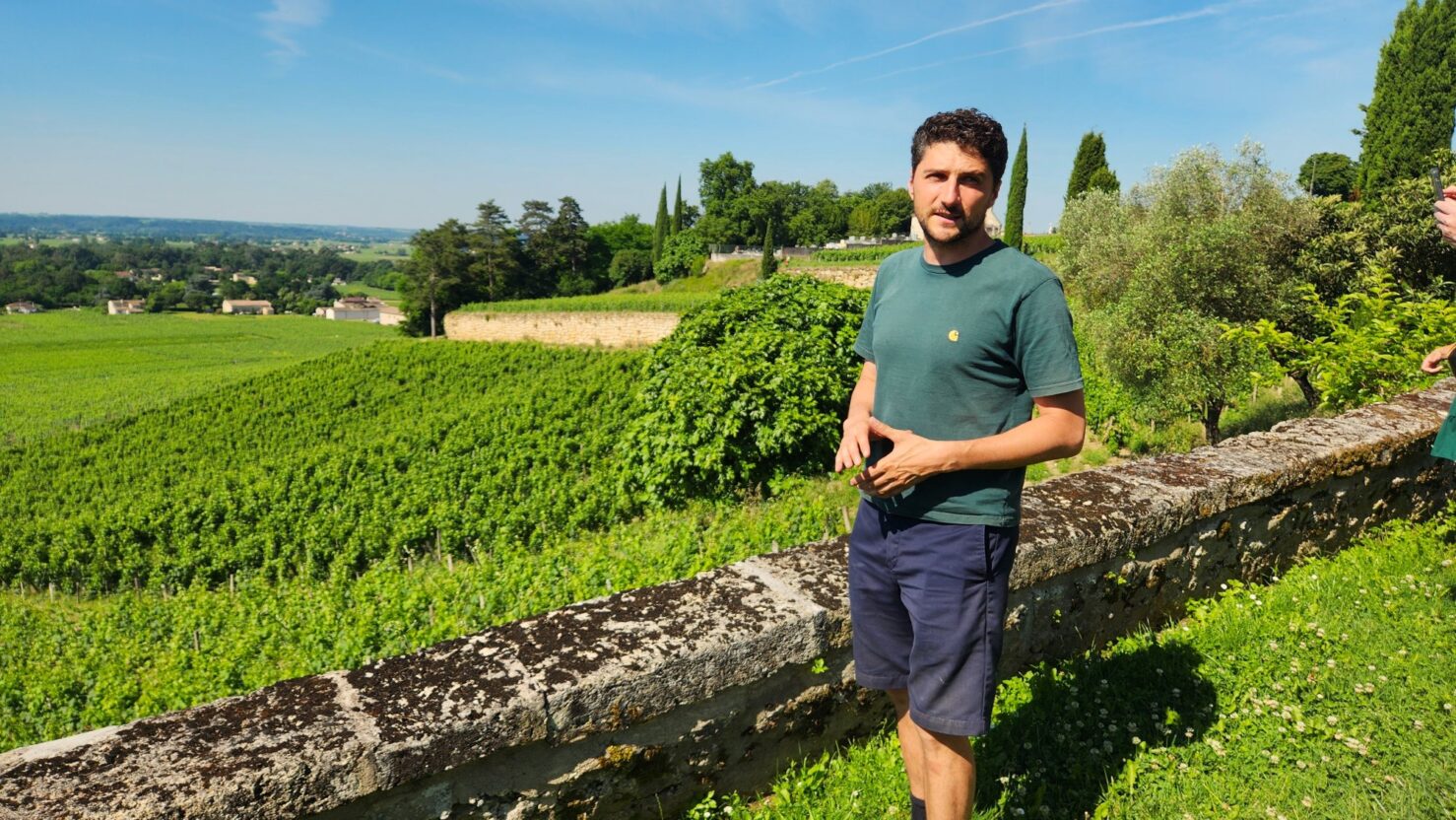
This is the smallest of the estates that we visited. It is authentic and remains strictly family operated. After the introduction, we stepped down the stairs into the small and dank cellar. Not for those who are allergic to mold, as it was everywhere. The wines were quite excellent and we tasted several…some right out of the barrel.
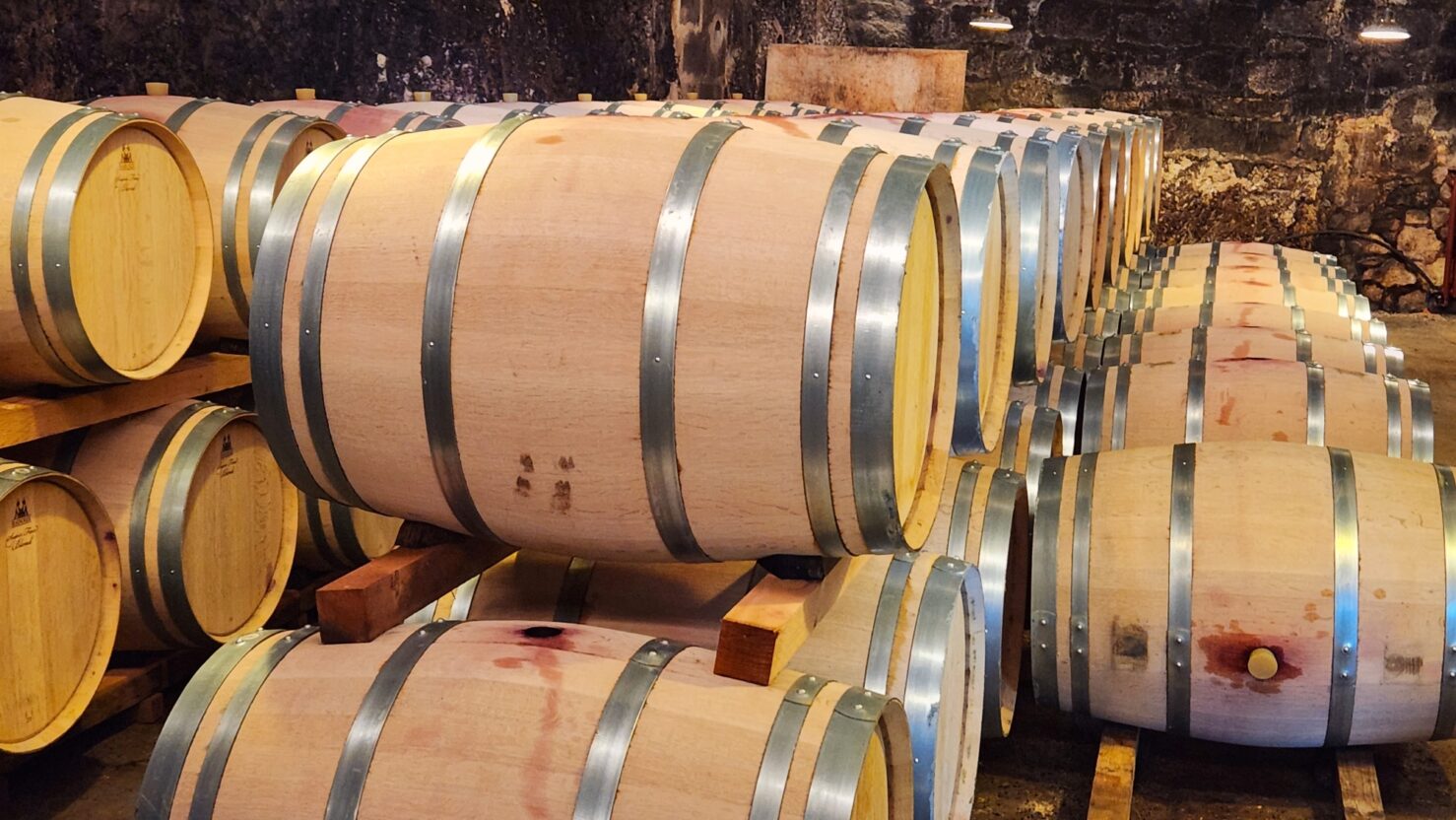
The vineyards in Saint-Laurent-des-Combes, just 3 kilometers from St. Emilion, deliver aromatic wines laced with cassis, blackberry and cherries. They are full-bodied, layered and concentrated, with a deep core of fruit, softer tannins and balanced acids.
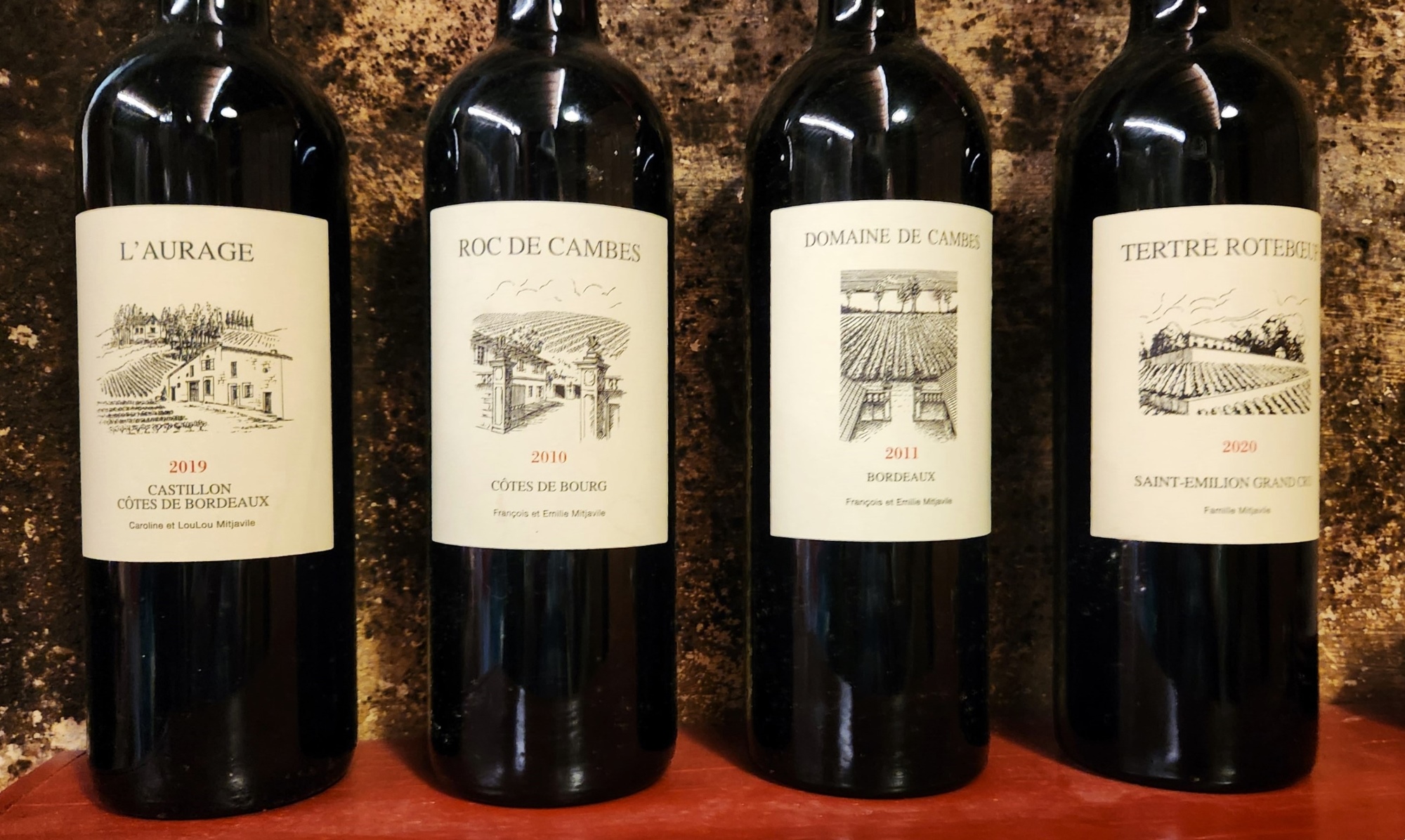
These wines are able to survive or even improve with a decade of bottle aging. We tasted the 2020 Tertre Roteboeuf, 2010 Roc de Cambes, 2011 Domaine de Cambes and Louis’s personal wine, the 2019 Castillon Côtes de Bordeaux. Truly unique reflecting the passion and purpose of both François and Louis.
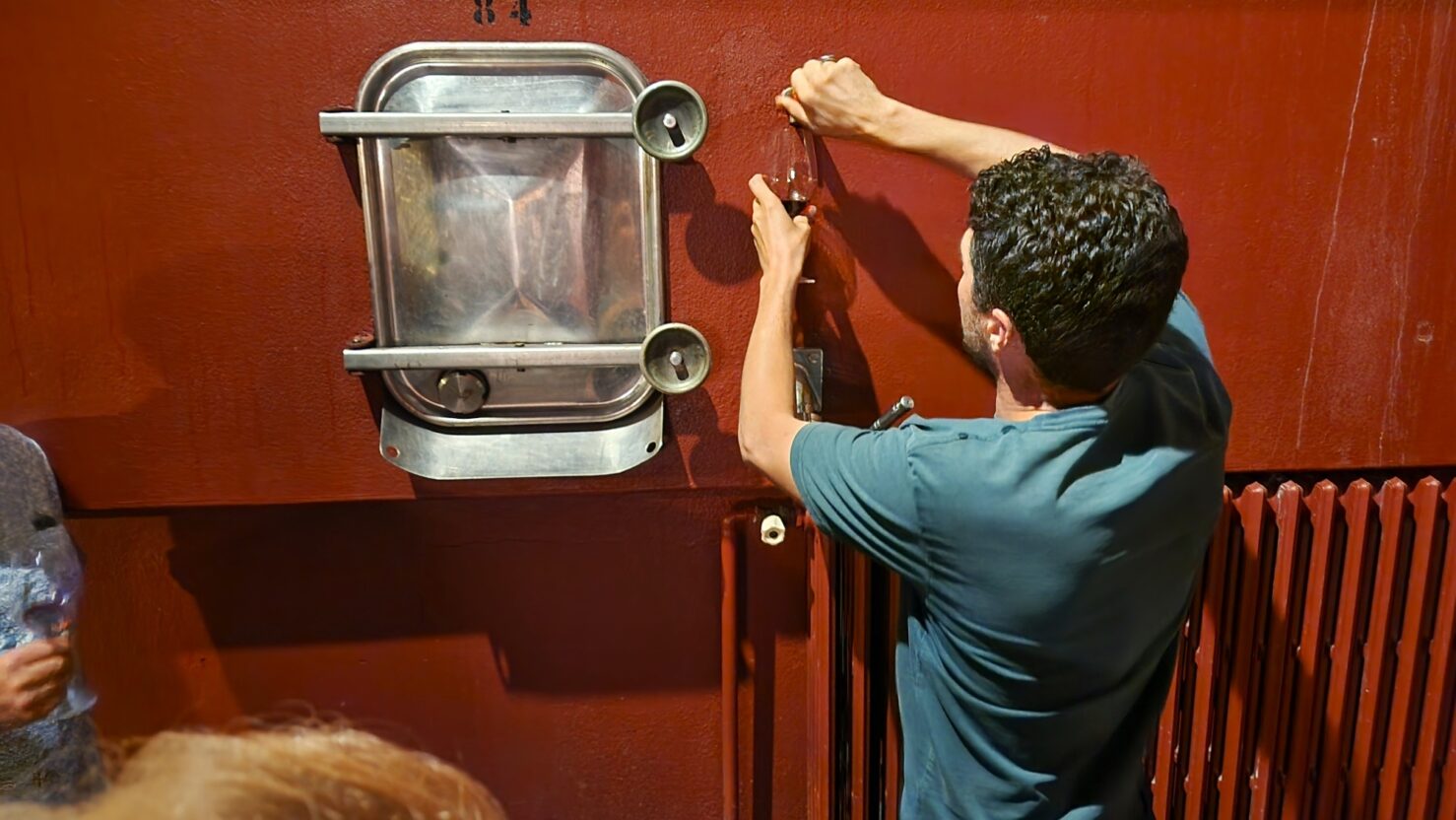
We reluctantly said au revoir to Louis and headed to Château la Dominique in St. Emilion for an extravagant lunch on their Terrasse Rouge. What an exquisite venue, surrounded on 3 sides by vineyards. The al fresco, but covered, dining terrace was a perfect way to enjoy this sun kissed day.
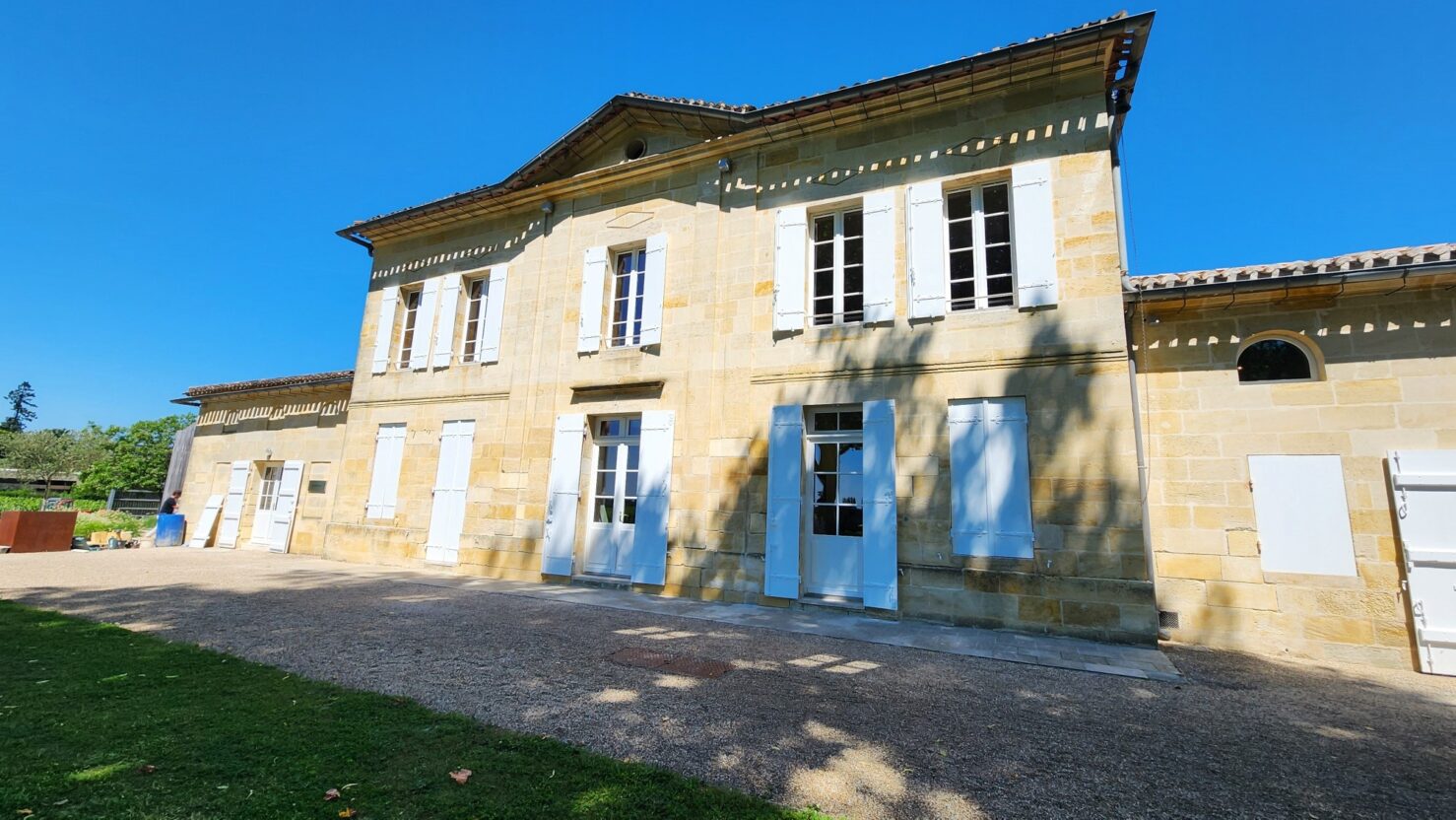
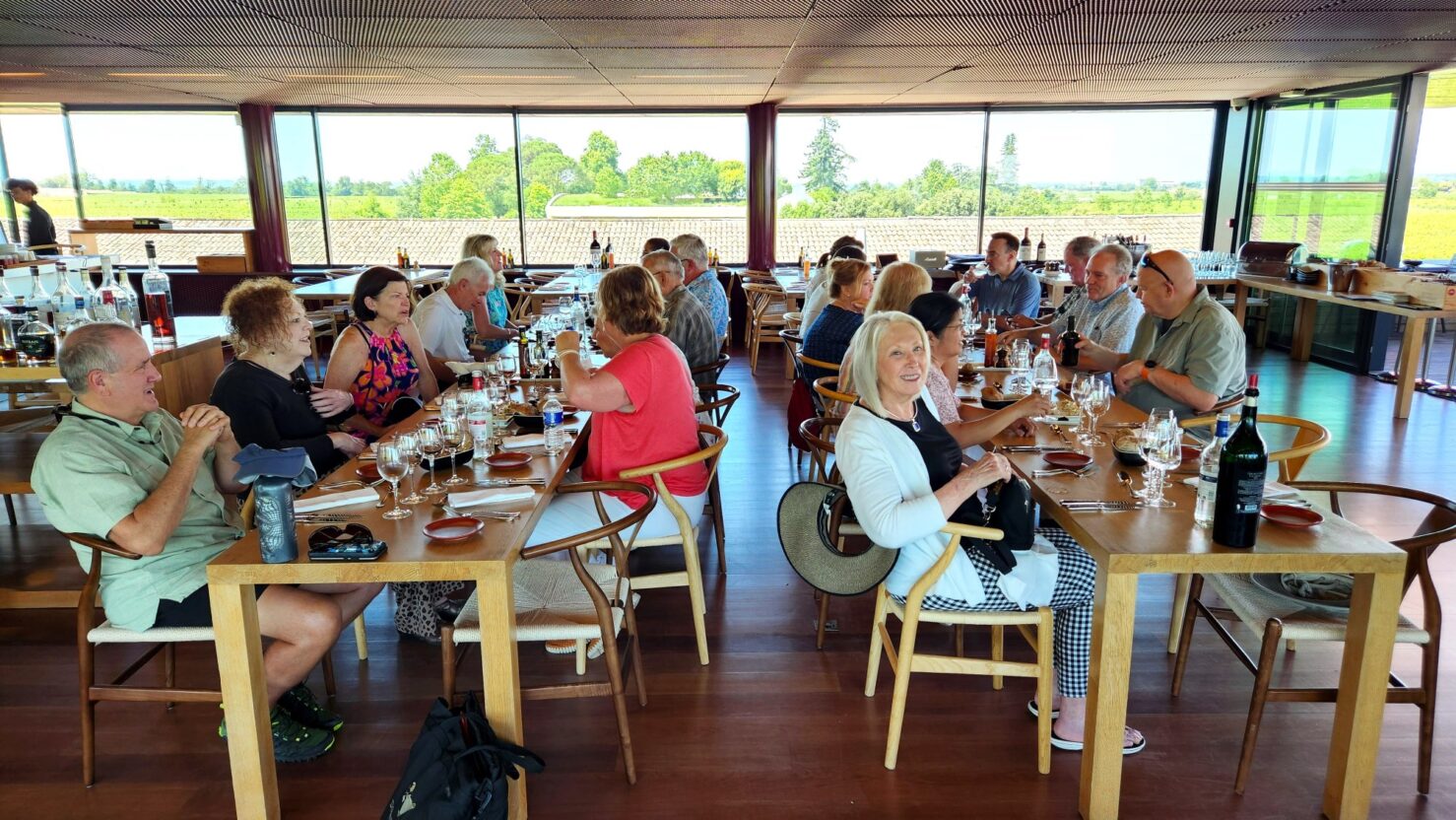
We were delighted with the food and the Château la Dominique wines the chateau staff offered with them. If you are looking for a venue for a wedding or other special occasion, Château la Dominique could be for you.
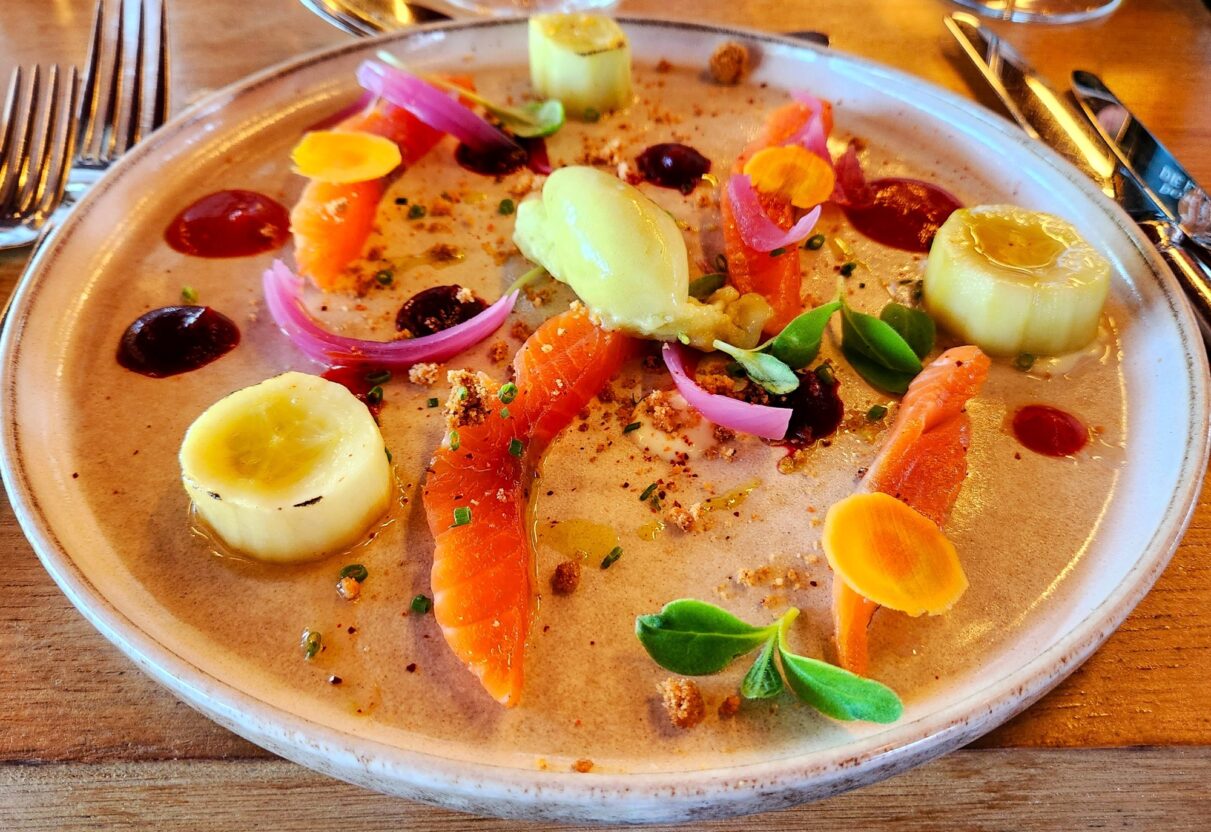
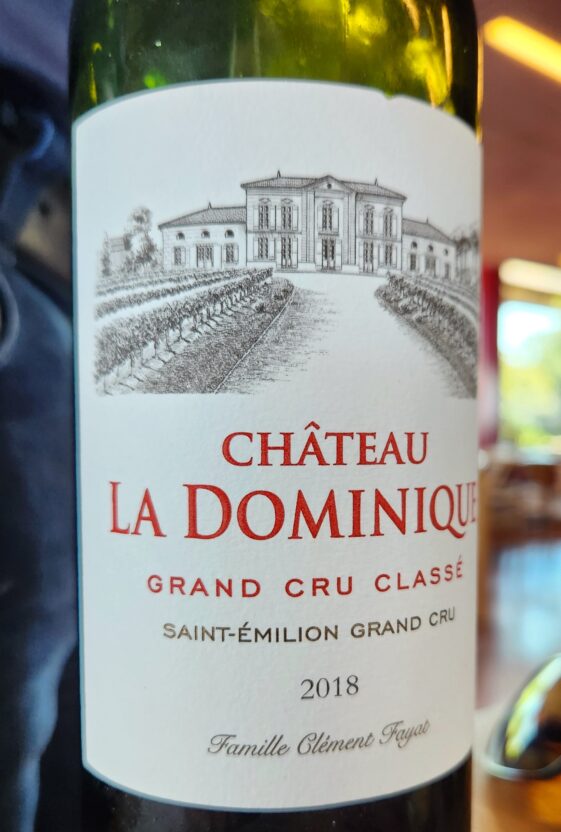
After lunch we motored to Château Fontenil where we were greeted by Dany Rolland, oenologist and partner to husband Michel Rolland, the legendary winemaker and wine making consultant. Michel and Dany met while attending the prestigious Bordeaux Oenology Institute, both graduating in 1972.
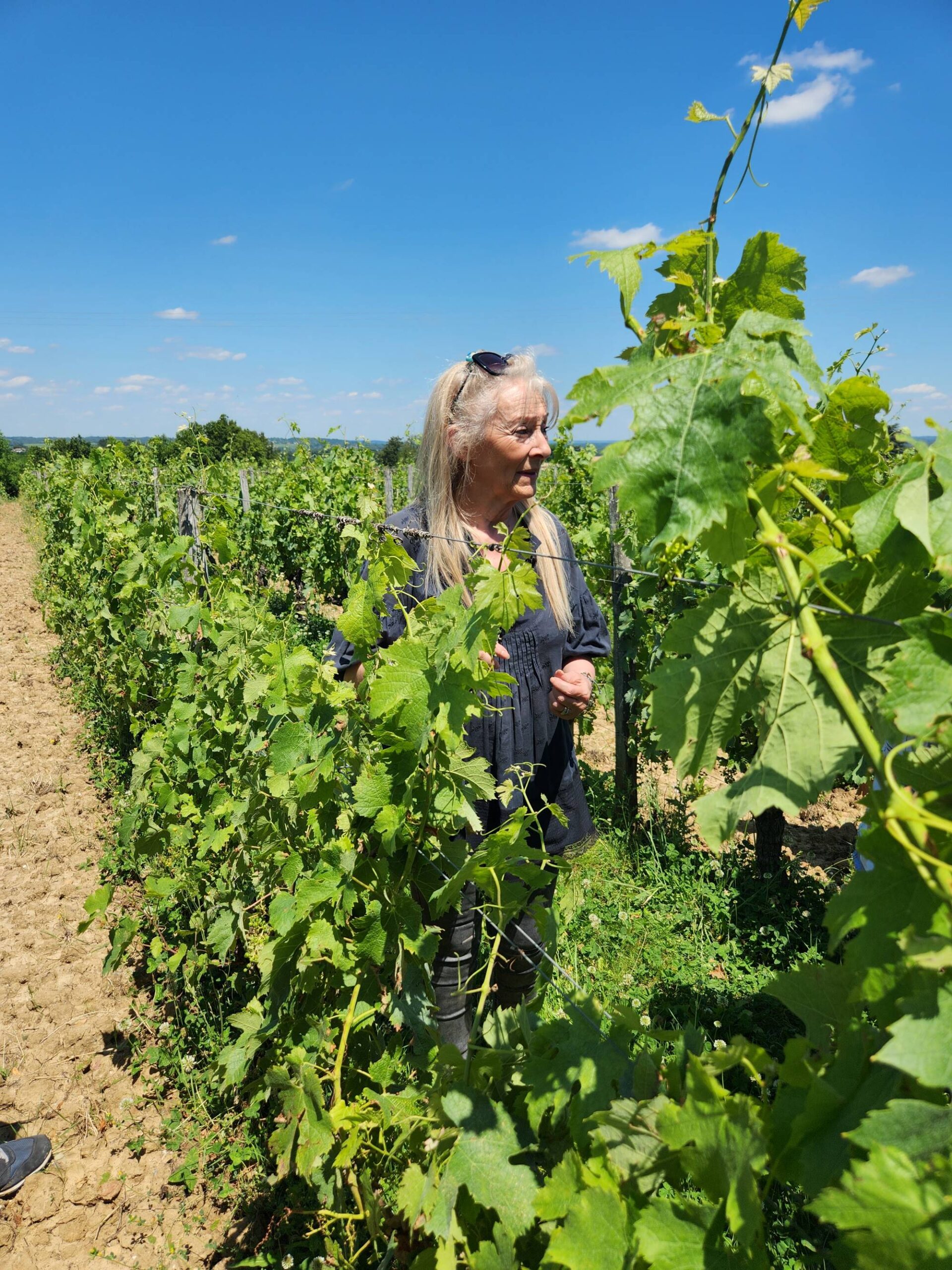
Madame Rolland, was vivacious and passionate about their estate in Fronsac, they own a few others, as she showed us around the vineyards, the winemaking operation, the cellar and finally the eclectic tasting room.
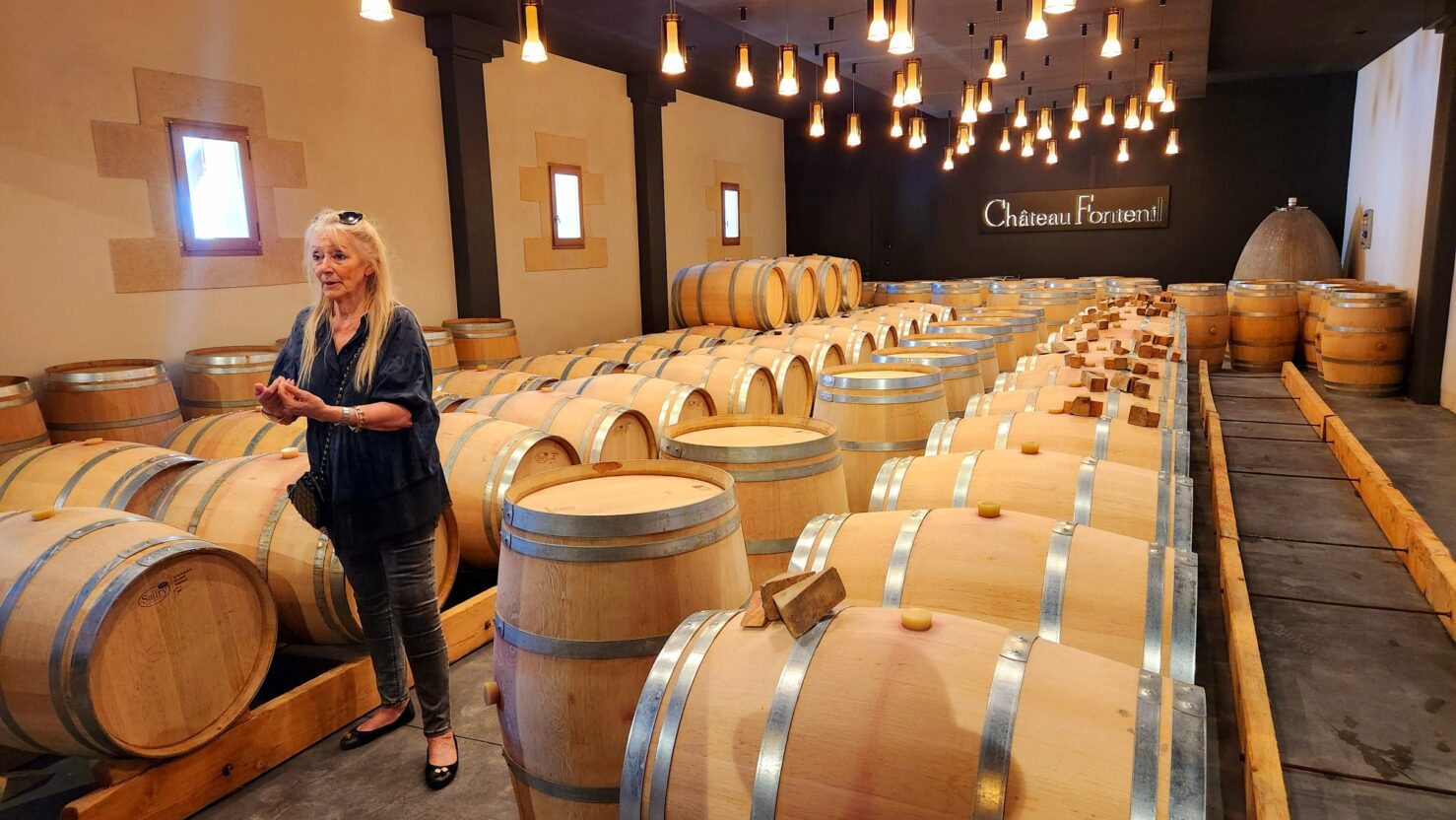
We tasted the 2019 Le Blanc de Fontenil, (a white blend), the 2010 Fronsac (90% Merlot 10% Cabernet), the Le Defi de Fontenil (100% Merlot) and the 2017 Yacochuya (Malbec and Cabernet from Argentina). The wines were quite different than many we had tasted to that point but exquisite in their color, flavor and complexity.
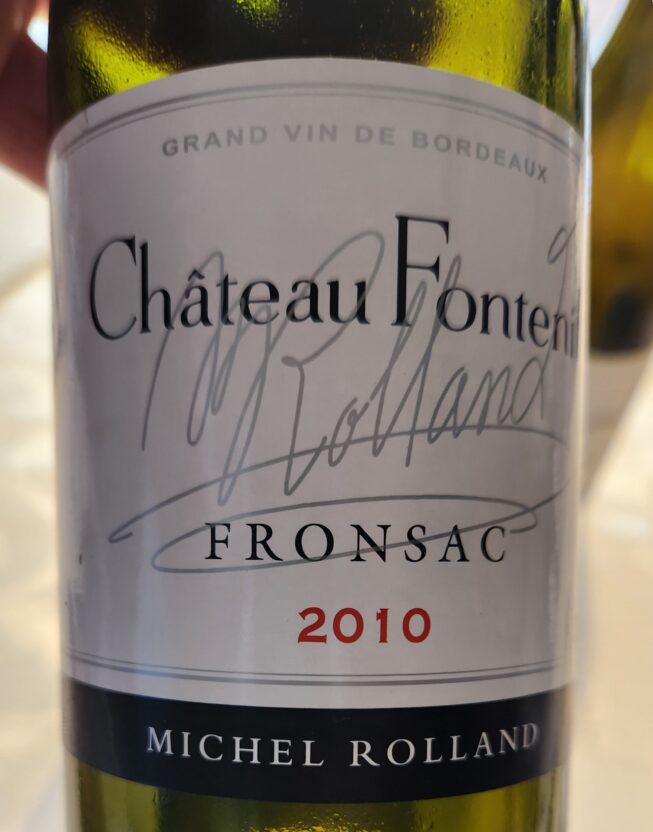
Our final tasting of the day started around 4pm at Château Valandraud, in Saint-Étienne-de-Lisse, St. Emilion. You may or may not know this producer, (we didn’t) but Jean-Luc Thunevin, with his wife Murielle, were the first garagiste in Bordeaux.
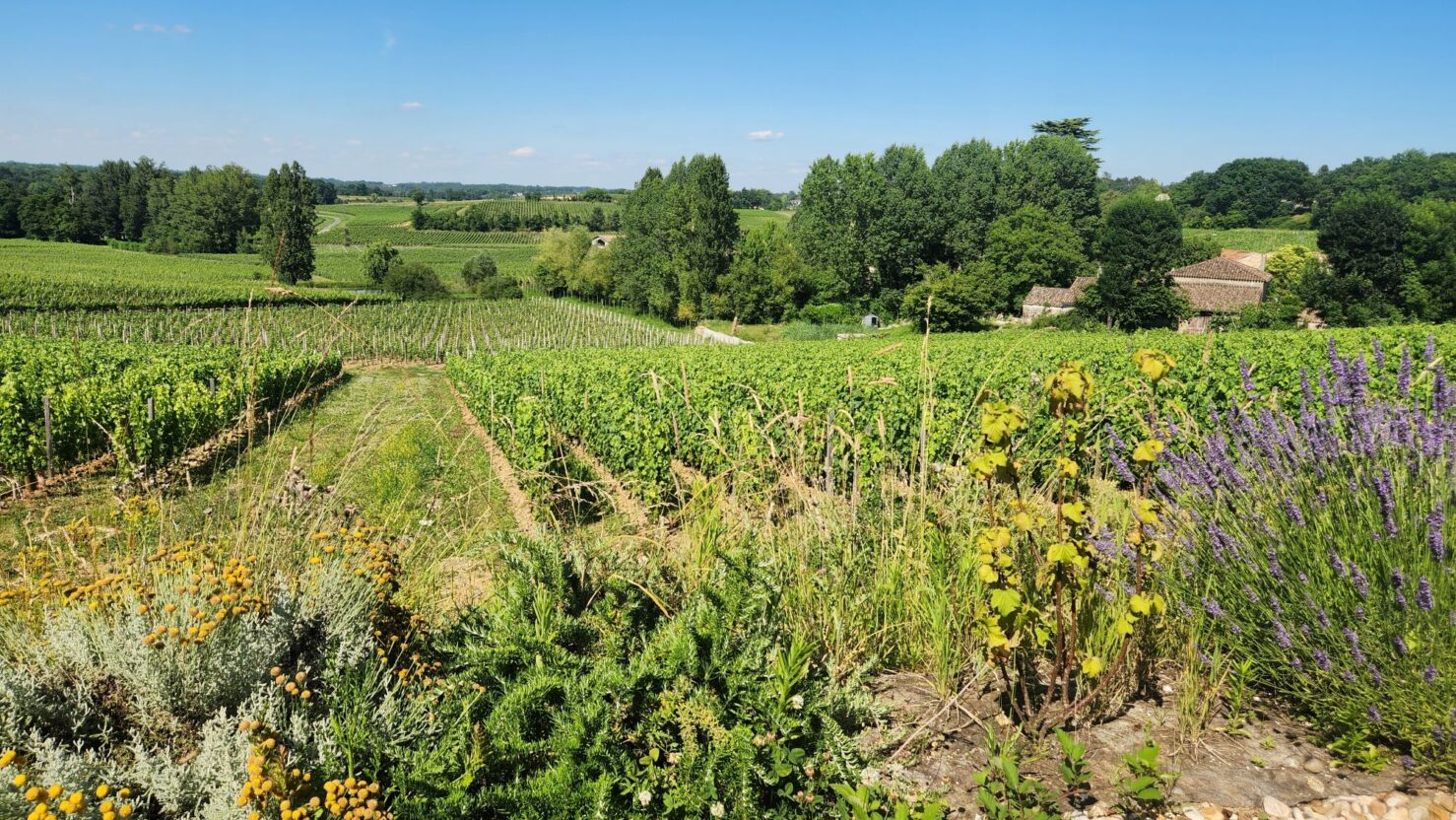
With just over an acre of vines, they sold the grapes to begin with. They slowly built up their holdings to about 26 acres. They released their first commercial bottling in 1991. Before long, their wines were receiving scores, at times, out pacing Château Petrus. Quite the rebel!
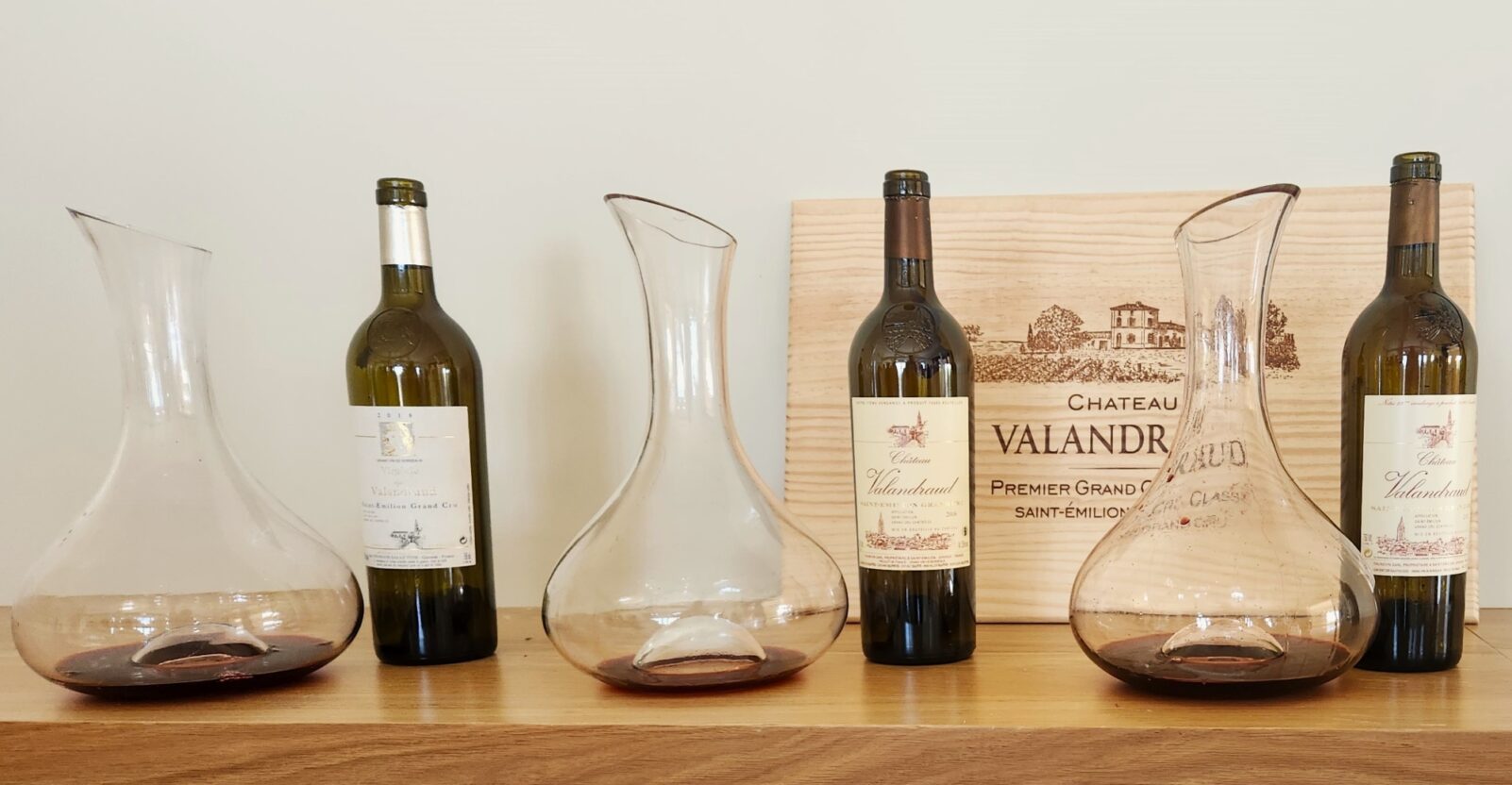
The vineyard is planted to a mix of 70% Merlot, 25% Cabernet Franc, 5% Cabernet Sauvignon. Ageing varies with each vintage, from 18 to 30 months in 100% new oak barrels. The winemaking operation is very modern and unique in its layout.
We enjoyed the 2013 Virginie de Valandraud, the 2006 Château Valandraud, the 2011 Château Valandraud (all Grand Cru wines), the 2019 Château Valandraud (Premier Cru) and the 2021 Beau-Père (Blanc). These wines were again, very different from others we had tasted. The opportunity to taste an 18-year-old vintage was extraordinary and appreciated.
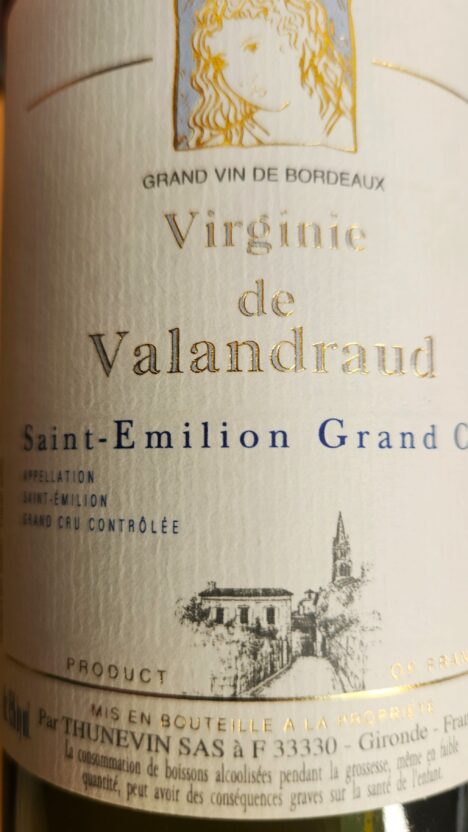
After returning to our hotel, we were free to have an evening on our own. We walked the lively streets of Bordeaux searching out a place for dinner. We looked into Brassiere La Noilles, which we learned began in 1932 with one dish, sauerkraut. In 1989, the Cuny family took over and upgraded the restaurant to a high-end Brassiere featuring classic Bordeaux cuisine. They hit the mark as we thoroughly enjoyed our intimate dinner.
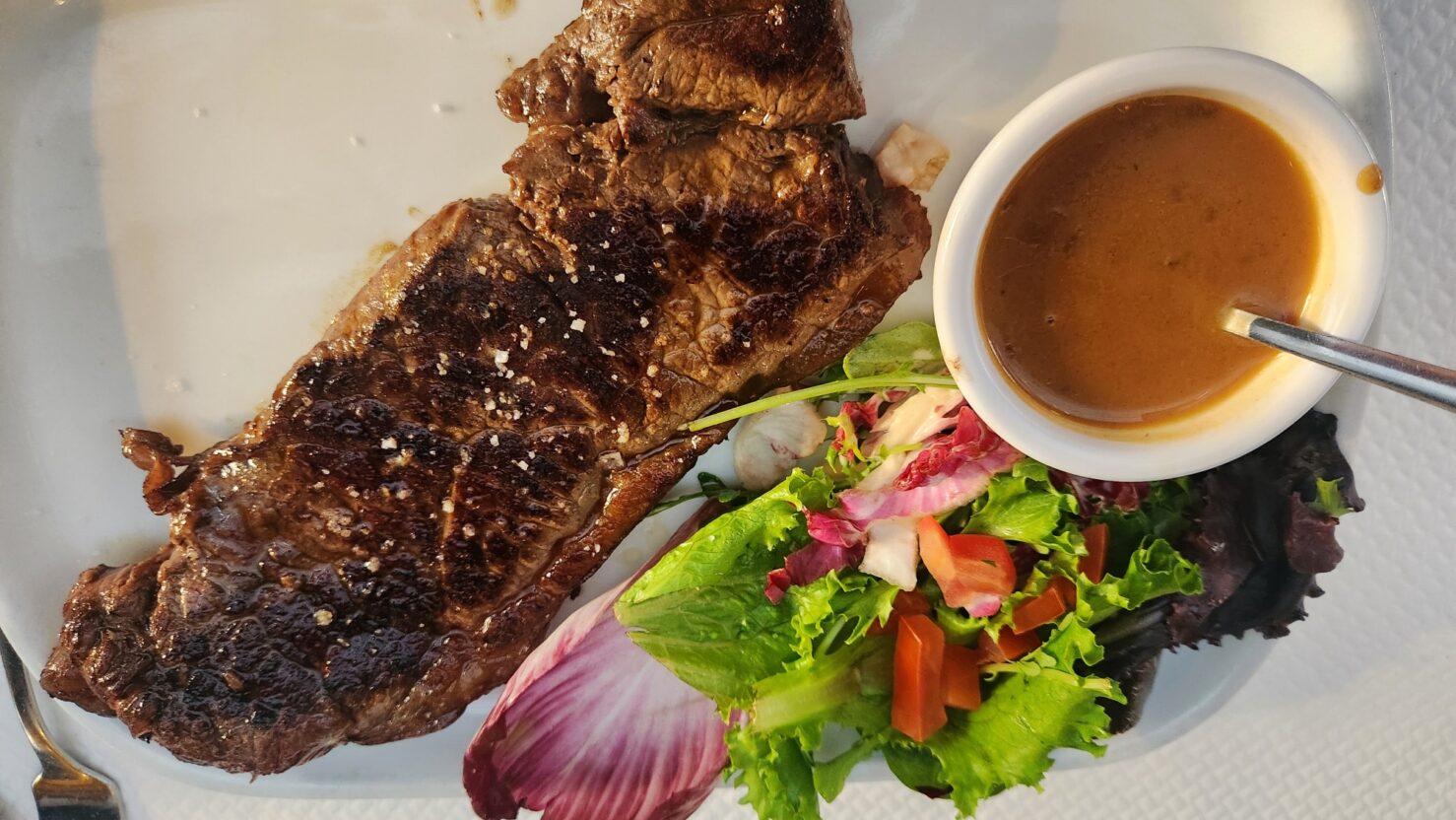
So, Day 3 ended with a slow walk back to our hotel enjoying the delightful weather and the vibrant scene with large numbers of people sitting outside at various restaurants and bistros. Bordeaux is an energetic city with great rivers, culture, parks and nightlife.
PART QUATRE will be posted soon and will focus on our last full day in Bordeaux with tastings and several amazing Châteaux located in Pauillac and Saint-Estephè, on the Left Bank. See you then.